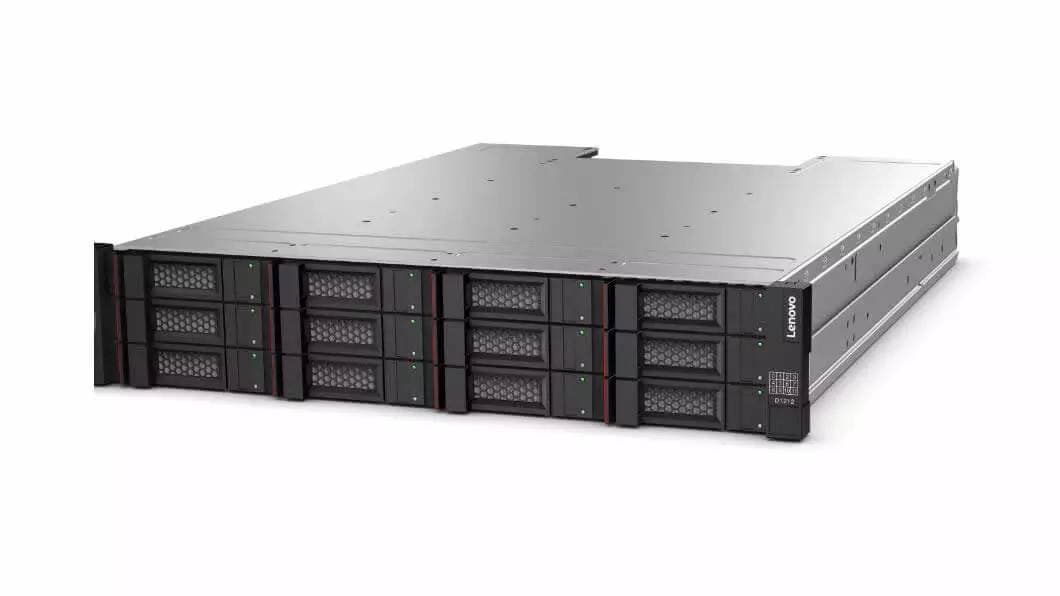DAS refers to Direct-attached storage as a digital storage system. It connects to a personal computer, workstation or server simultaneously. It’s not attached to any kind of network system.
A direct-attached storage server is only connected to a single computer or server, which is not accessible to other computers. This server connects with the help of host computers.
DAS is especially used for internal storage in personal computers or servers. It can be in the form of a hard-disk drive or solid-state drive, which connects to the motherboard simultaneously.
This can be used for file servers in small and medium-sized businesses (SMBs) and in data centers as private storage connected to dedicated servers.
Big corporations use DAS with networked storage systems like SAN and NAS.
How does DAS work?
Direct Attach Storage is installed locally or remotely and does not require network access to interact with the host machine or server. High-speed host bus connectors allow you to connect internal storage devices to your host or desktop computer.
The SATA interface connects regular hard disk drives or faster solid-state drives to personal computers. Internal storage is also possible via high-speed connectors such as SATA, SCSI and SAS.
A connected computer manages and controls it. All other computers on the network can access data only through the host computer to which the DAS server is physically attached.
Types of DAS Servers:
-
Internal DAS:
Internal DAS refers to a storage device directly attached to a server or PC by using HBA technology. HBA is used for high-speed data transmission for connectivity over short distances.
-
External DAS:
External DAS is a DAS in which an external storage device gets directly connected to a server without any device. In External DAS, FCP and SCSI act both as protocols or interface between the server and the storage device.
Benefits of DAS:
-
Frequency Range:
These types of systems can operate on various frequency bands (e.g., cellular, Wi-Fi, public safety) depending on the wireless technology being utilized. The frequency range covers the authorized bands used by wireless carriers or service providers. A cellular DAS drive storage covers frequency ranges such as 700 MHz, 850 MHz, 1900 MHz, AWS, or PCS. The frequency ranges of 2.4 GHz and 5 GHz can be managed by Wi-Fi in this system.
However, it is important to remember that these systems amplify and distribute wireless signals from existing wireless networks rather than producing them independently. As a result, a system's frequency range will rely on the wireless networks that it is intended to support.
-
Capacity:
Capacity is the number of users and devices a directly attached system can support simultaneously. Storage systems known as DAS (Direct Attached Storage) systems are accessible now from a server or computer system rather than over a network.
Moreover, the quantity and size of the hard discs or solid-state drives (SSDs) a DAS system includes define its capacity. Little single-drive devices with capacities of a few terabytes or fewer are one type of directly attached server system, and larger enterprises use RAID arrays with numerous hard drives or SSDs with capacities in the petabyte range.
-
Coverage Area:
The coverage area is the quantity and location of transmitters in a directly attached system. It can be a single structure or a full campus or a public area. Several variables, including the frequency band being used, the antennas' power output, and the environment's physical properties, have an impact on this system's coverage area.
Also, such servers are made to offer dependable wireless coverage in locations where the primary wireless network's signal can be weak or unavailable due to obstruction or interference.
-
Excellent performance:
Direct-attached storage allows for lightning-fast retrieval because it is usually physically attached to the device from which the data is retrieved. For direct-attached storage, network issues such as slowness or congestion are irrelevant. However, the network environment affects the computer's ability to access data stored on direct-attached storage linked to the storage server.
-
Easy to install and deploy:
Internal direct-attached storage is a common component of modern computing systems and is provided to the user fully configured and ready to use. Normally, when additional devices are connected to a USB port or another compatible connection, they are automatically recognized and ready for use.
-
Cost-effective:
Direct-attached storage consists only of storage devices and drive enclosures. This system is fairly economical compared to other storage systems that require hardware and software to operate and control storage devices. This minimizes costs by facilitating maintenance and reducing the need for a large supply of replacement parts.
In addition, file and storage server costs can be minimized by using only one server to manage the virtualized environment with DAS server capacity. Compared to using many JBOD servers, this solution is superior. As a result, you will reduce your finances.
Bottom Line:
DAS server offers quick access to data because it’s directly attached to a computer that is requesting and consuming data. This technology provides easy setup solutions to companies or businesses.


No comments yet